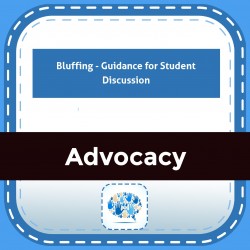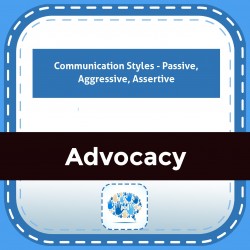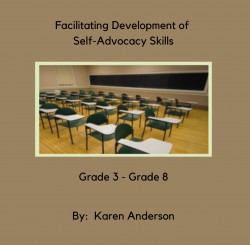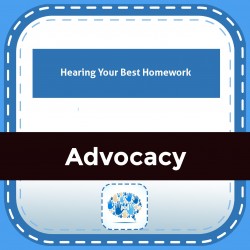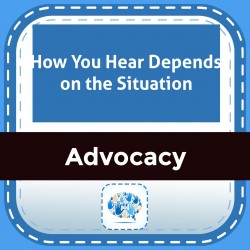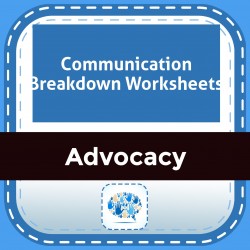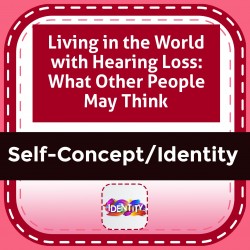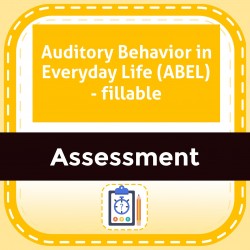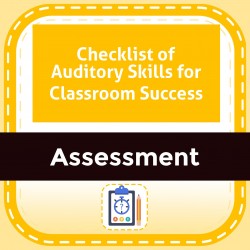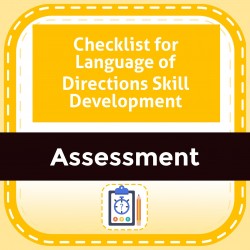Ability Levels
Categories
Resource Types
Age/Grade Range
CCSS
Anchor Standard
Speaking & Listening
Language
Reading
Bluffing - Guidance for Student Discussion
$ 075
This information provides teachers and families ideas for how to discuss bluffing with children who are deaf or hard of hearing. Children often resort to bluffing, or pretending that they understood,
...
when they lack strategies for how to repair a communication breakdown. Guides discussion, not a worksheet. From Building Skills for Success in the Fast-Paced Classroom.
Communication Styles - Passive, Aggressive, Assertive
$ 295
This
packet of instructional materials teaches the advantages and disadvantages of
different communication styles, specifically responding passively,
aggressively, or assertively when you
...
do not understand something that was said. Includes assessments and teaching
materials. From Building Skills for Success in the Fast-Paced Classroom.
Facilitating Development of Self-Advocacy Skills
$ 495
This
packet of instructional materials provides teacher guidance information
followed by assessment and instructional materials to use to teach students
to recognize listening challenges
...
and related self-advocacy strategies. From Building Skills for Success in the Fast-Paced
Classroom.
Hearing Your Best Homework
$ 195
This packet of instructional materials includes 5 homework sheets based on the CHILD checklist (P01ASM0573). Ideally, the parent or caregiver would work with the student to discuss each communication
...
situation and then determine, 1) what the child can do, and 2) what the family can do to prevent or help to repair a communication breakdown. From Building Skills for Success in the Fast-Paced Classroom.
How You Hear Depends on the Situation
$ 1
How You Hear Depends on the Situation is an instructional worksheet activity in which the student must 1) identify the level of difficulty of listening challenges, 2) provide an example of when they e
...
xperienced such a situation, 3) come up with examples of what they can do in response to the situation and 4) identify what they could ask their teacher, friends or family to do. A good teaching tool or progress monitoring activity after self-advocacy strategy instruction. From Building Skills for Success in the Fast-Paced Classroom.
Communication Breakdown Worksheets
$ 1
This instructional packet is to increase the student's awareness of what is meant by 'communication breakdown', reasons for breakdowns and types of communication breakdowns. This instruction is an imp
...
ortant precursor to teaching communication repair strategies. From Building Skills for Success in the Fast-Paced Classroom.
Living in the World with Hearing Loss: What Other People May Think
$ 1
Living in the World with Hearing Loss: What Other People May Think consists of 3 activity worksheets wherein students consider their own feelings about having a hearing loss in contrast to the accepta
...
nce of others who do not have a hearing loss. An excercise to use when students resist amplification use and to support self-determination.
Auditory Behavior in Everyday Life (ABEL) - fillable
$ 195
Auditory
Behavior in Everyday Life (ABEL) is a quick questionnaire
to be completed by parents or others who know the
student very well. 7-choice response format with question categories:
...
auditory-oral, auditory awareness, and conversational/social skills. A
typically developing child who learns primarily through listening can be
expected to evidence all skills by age 6. Fillable.
Checklist of Auditory Skills for Classroom Success
$ 050
Auditory skills are developed within a set hierarchy. This 1-page sheet provides a checkable list of auditory skills represented by the hierarchy. It is a good summary to share with families and educa
...
tors to demonstrate the complexity of learning listening skills when a child is born with a hearing loss.
Checklist for Language of Directions Skill Development
$ 195
This functional checklist includes 10 examples of each of different type of question categories: one-part directions, yes/no questions, what, where, who, why, when questions. Age level expectations ar
...
e provided for each type of question category. Provides 3 columns to show test dates and check off for mastery so the checklist can be used by educators or families for progress monitoring.
 Your browser is out of date. For best experience switch to latest updated Browser.
Your browser is out of date. For best experience switch to latest updated Browser.
 Get Chrome
Get Chrome Get Edge
Get Edge Get Firefox
Get Firefox